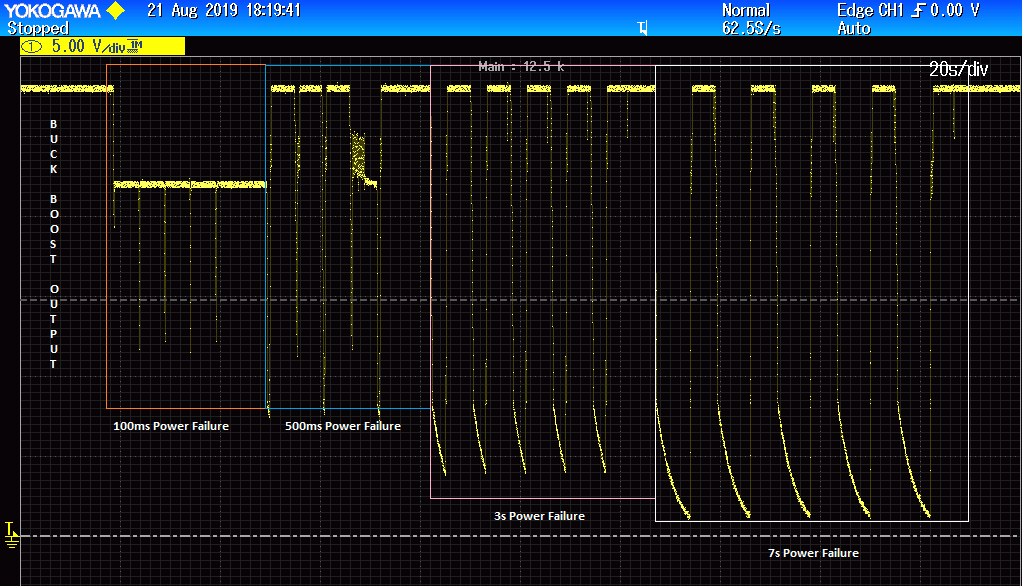Hello,
We have used the LM5118 IC to derive 28V output from 9-36V i/p voltage. This circuit is followed by a schottky diode and a parallel combination of holdup capacitors (1300uF x 3). The holdup is later followed by load. We are facing an issue of instability in the buck boost output when an under voltage transient test(LDC 302 as per MIL-STD-704D) is executed. The detailed scenario is explained below.
When a under voltage transients are given at the input of buck-boost IC, The output is cutoff when the input transient of 7V is induced on the converter which is later taken care by holdup capacitors.
During this under voltage transient test, We are observing the drop in buck boost output to 22V and is sometimes further decreasing to 8-10V. This is causing our holdup to discharge quickly and our further circuits are getting turned off. One more thing is that the buck boost output is not recovering back to 28V after the input is recovered back to nominal voltage. We are not expecting this scenario to occur as per our design.
There is one more test (LDC 601 power failure test as per MIL-STD-704D) where a power failure of 100ms, 500ms, 3s and 7s are simulated. After a power failure of 500ms is executed, It is observed that our buck boost output is dropping to 22V. It is recovering back again after a power failure of 3s is executed. During this condition, It is also observed that our holdup capacitors are not completely discharged when a power failure of 500ms is provided though holdup capacitors are designed to withstand only 50ms failure.
This is primarily suspected as an issue with line regulation. Could anybody please suggest a few things that could solve the above problems.
Thank you.


